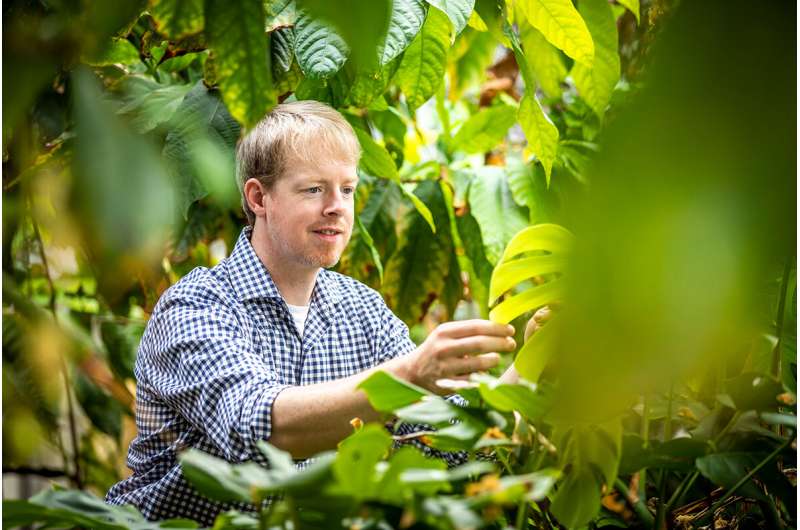This article has been reviewed according to Science X's editorial process and policies. Editors have highlighted the following attributes while ensuring the content's credibility:
fact-checked
peer-reviewed publication
trusted source
proofread
Team finds reliable predictor of plant species persistence, coexistence

Like many ecological scientists, University of Illinois Urbana-Champaign plant biology professor James O'Dwyer has spent much of his career searching for ways to measure and predict how specific plant communities will fare over time. Which species in a diverse population will persist and coexist? Which will decline? What factors might contribute to continuing biodiversity?
In a new study reported in the journal Nature, O'Dwyer and his colleague, U. of I. graduate student Kenneth Jops, report the development of a method for determining whether pairs or groups of plant species are likely to coexist over time. Using data from published studies, their approach reliably predicts the complementary life histories of pairs of plants that—while competing for many of the same resources—manage to thrive in a shared habitat.
The method relies on the painstaking collection of years of data about each species, O'Dwyer said.
"Over the last 50 or so years, people have gathered more and more data about plant life histories, your death rates, your reproductive rates, how many seeds you're producing, how quickly you grow into the next life stage—and all of that can be changing throughout your lifespan," he said. "And we write this as a matrix that roughly describes all those aspects of life history—and it's different for every species."
Certain elements of the matrix are plugged into an equation that yields the "effective population size," a number that is recorded in units of years. The key finding in the new study is that if two plant species have roughly equivalent effective population sizes, they are more likely to coexist over time.
Jops first saw patterns in the data gathered for species found in the same habitat, "but it took us a while to make sense of the patterns," O'Dwyer said.
An equal or near-equal EPS means that "there's something about the way that the life histories jigsaw together that makes it more likely that they will persist," O'Dwyer said.
The EPS equation reflects a mathematical relationship between the number of new individuals "born" each year, the average age of the parents, and the plant's reproductive success over its lifetime, the researchers said.
The team found that a larger EPS also coincided with a better outcome for the species.
The data set the team used in the new study is relatively small, O'Dwyer said.
"There are around 800 to 1,000 plant species in the database we use—a drop in the ocean of plant diversity," he said. Further research will test the new method on larger data sets involving more plants in more types of habitats, the researchers said.
"Plant biodiversity is a huge and complex question and I'm glad we were able to shed some light on how life history fits into that puzzle," Jops said. "I hope this will encourage researchers to collect life history data across larger communities so we can apply our theory along with niche, fitness differences and environmental factors to better explain biodiversity patterns across the globe."
More information: Kenneth Jops et al, Life history complementarity and the maintenance of biodiversity, Nature (2023). DOI: 10.1038/s41586-023-06154-w
Journal information: Nature
Provided by University of Illinois at Urbana-Champaign





















